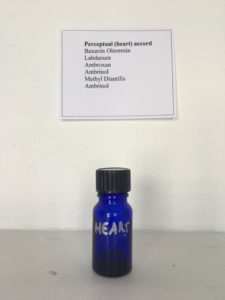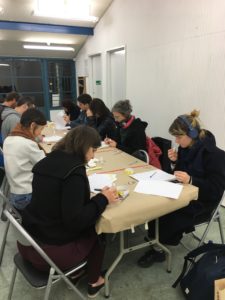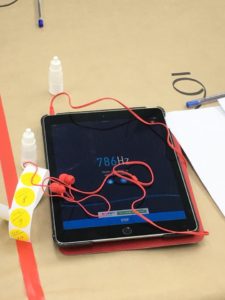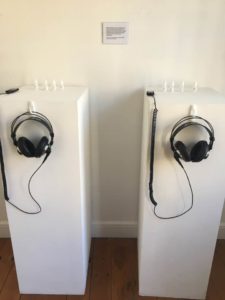 “But when from a long-distant past nothing subsists … the smell and taste of things remain poised a long time, like souls, ready to remind us, waiting and hoping for their moment, amid the ruins of all the rest; and bear unfaltering, in the tiny and almost impalpable drop of their essence, the vast structure of recollection.”
“But when from a long-distant past nothing subsists … the smell and taste of things remain poised a long time, like souls, ready to remind us, waiting and hoping for their moment, amid the ruins of all the rest; and bear unfaltering, in the tiny and almost impalpable drop of their essence, the vast structure of recollection.”
Marcel Proust, In Search of Lost Time
When the narrator of Proust’s novel, In Search of Lost Time bites into a madeleine cake, he is involuntarily transported back to a joyful moment, which he comes to identify as that of sharing the cake with his aunt as a child. This power of taste and smell to powerfully trigger memories and emotions – which has become known as the “Proust effect” after this passage – is likely due to the fact that unlike vision, sound or touch, our olfactory system is directly connected to the amygdala and hippocampus, areas of the brain involved in emotion and memory. These very personal experiences that can be conjured up by smell and taste are something of which anyone working with these senses must be mindful. As an artist using both, I was interested to know how this might influence correspondences with the other sense in my practice, audition.
 One of the central parts of my Culture at Work Art-Science residency was an audio-olfactory experiment in which I sought to identify correspondences between a selection of different sounds and aromas and gain insights into how these might be emotionally, conceptually or perceptually influenced. Past studies have identified sound-smell correspondences that people appear to share, and have started to examine what might be behind these. However, while the role of emotion has been explored and identified as one of the factors likely mediating audio-olfactory correspondences, no study to date has examined the personal associations and memories that may play a part in this. Given this gap, I was keen to incorporate this into my own research.
One of the central parts of my Culture at Work Art-Science residency was an audio-olfactory experiment in which I sought to identify correspondences between a selection of different sounds and aromas and gain insights into how these might be emotionally, conceptually or perceptually influenced. Past studies have identified sound-smell correspondences that people appear to share, and have started to examine what might be behind these. However, while the role of emotion has been explored and identified as one of the factors likely mediating audio-olfactory correspondences, no study to date has examined the personal associations and memories that may play a part in this. Given this gap, I was keen to incorporate this into my own research.
 Assisting me in the experimental design, was my residency science partner, the cognitive neuroscientist and specialist in sensory processing and synaesthesia, Associate Professor Anina Rich of Macquarie University, and her colleague Mem Mahmut, a psychologist specialising in olfaction. On 19th July, 14 participants progressed round my series of ten “smelling stations”, where they’d rate an unidentified aroma for a number of characters. These characters included personal preference and perceptual characters such as harshness/softness. They were also asked to guess what they thought the aroma might be and whether the aroma evoked any personal associations or memories. A similar set of questions was asked for the six sound/music samples that were played over the course of the experiment. Participants went on to rate the match of each of the ten aromas that they encountered with each of the sound samples, and select a sound frequency level on a tone generator that they felt best matched each aroma.
Assisting me in the experimental design, was my residency science partner, the cognitive neuroscientist and specialist in sensory processing and synaesthesia, Associate Professor Anina Rich of Macquarie University, and her colleague Mem Mahmut, a psychologist specialising in olfaction. On 19th July, 14 participants progressed round my series of ten “smelling stations”, where they’d rate an unidentified aroma for a number of characters. These characters included personal preference and perceptual characters such as harshness/softness. They were also asked to guess what they thought the aroma might be and whether the aroma evoked any personal associations or memories. A similar set of questions was asked for the six sound/music samples that were played over the course of the experiment. Participants went on to rate the match of each of the ten aromas that they encountered with each of the sound samples, and select a sound frequency level on a tone generator that they felt best matched each aroma.

A taste of the experiment is available at the Osmic Resonance exhibition
The results provided some fascinating new insights into audio-olfactory correspondences, which I went to apply in the creation of my residency exhibition, Osmic Resonance. I will be discussing these, and how I integrated them into the work, in the Osmic Resonances and Sensory Correspondences Talk that I’m giving on Thursday 9thAugust, which Anina Rich will be illuminating with perspectives on sensory interaction from her perspective as a cognitive neuroscientist.
The research continues within the exhibition, as participants are invited to provide feedback on their experience of the Osmic Resonance installation itself.
Osmic Resonance
4-12 August, 2018 – 11am-4pm
Accellerator Gallery
Scott St, Pyrmont, Sydney
